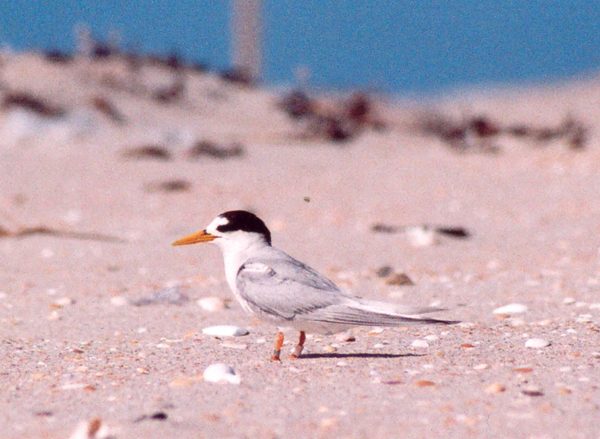Finding Fairyland
Blogger: Conservation Advocate for Forest & Bird, Karen Baird
Fairy tern – given the name you’d think it was a mythical creature. But no, it’s alive and kicking. Well only just – there are only about 36-40 individuals (and 8 breeding pairs), giving it the unenviable title of ‘our rarest indigenous bird’.

Fairy tern, Pakiri Beach. Photo: Andrew Hogan
Once widespread on both islands, this imperilled bird’s homeland has been reduced to just four breeding sites, the most important at Mangawhai in Northland.
Having bounced back from single digit population figures (eight individuals) in 1983, the population is now crawling back from the brink of extinction, and these sites are suffering from overcrowding. So, we’re looking for new breeding sites.
Over the next few months Forest & Bird will identify potential new breeding sites in Northland, giving young fairy terns the opportunity to occupy sites where they aren’t competing for food, or good nesting sites with their territorial elders.
Young fairy tern couples aren’t competing just with their elders though: they’re looking for patch that is free of beach-goers that may disturb their ability to have a family.
One breeding area – Te Arai –is being eyed up as a site for a 200-bed hotel and huge residential area, something we are fighting vigorously.
So with our coastal development forecasting skills and our growing knowledge of the fairy terns feeding habits & breeding site requirements – we feel we’re well placed to search out a new homeland. Call us a fairy-tern real-estate agent, if you will.
By protecting additional breeding sites with predator control, we’ll be giving this population a chance to expand beyond the 4 current breeding sites and increase the number of breeding pairs.
If one of the existing sites takes a knock from a storm surge, or their home gets drowned in waves – there’ll be a stronger population from more breeding locations able to keep the species going.
That way, they’ll be better able to weather (no pun intended) any surprise knocks that come their way.
As the victims of habitat change, introduced predators, the march of coastal developments along Northland’s beaches and now inbreeding, we sure know that the fairy tern needs a break!
